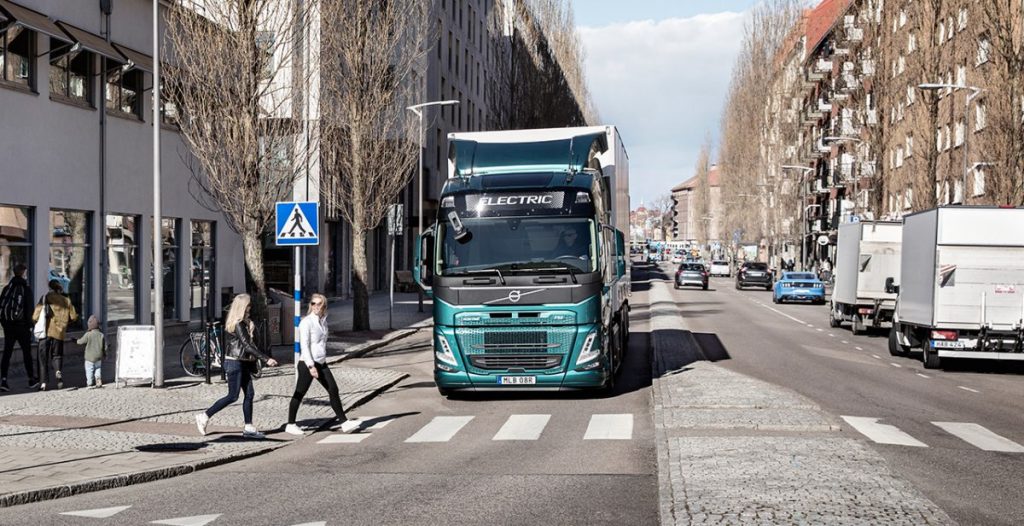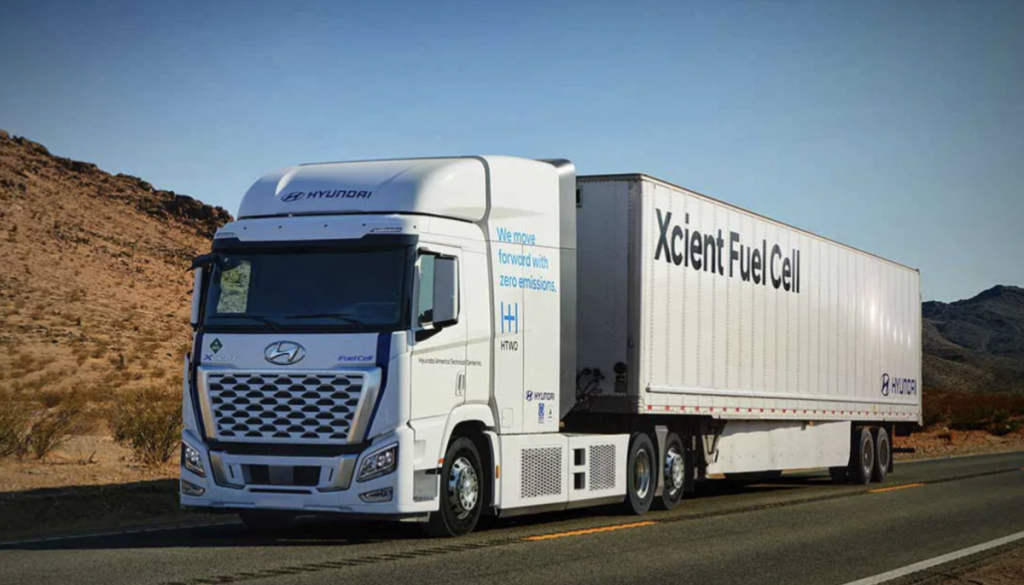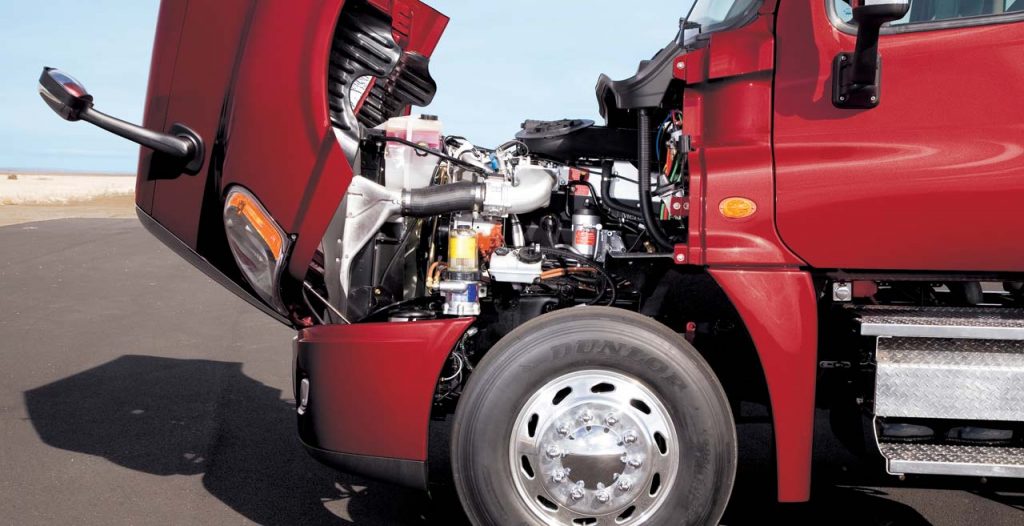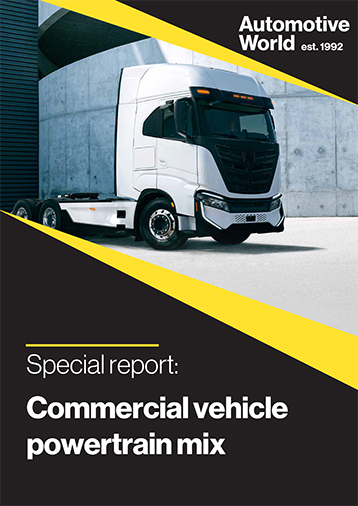Just a few years back, commercial vehicles (CVs) were seen as a safe bastion for diesel engines. Efficiency, durability and energy density requirements of the industry seemed to ensure that goods and people transported via trucks and buses would remain ICE-dominated for a long time.
Today, with increased awareness of climate change, expanded government regulatory push and fiscal support for zero emissions vehicles (ZEVs) in the transport industry, and a clear focus of NGOs on transportation segments other than passenger vehicles, things have changed.

By and large, push and pull factors are driving ZEV adoption in the CV industry. The push side is driven by regulation. Here we see, for example, very strict fuel economy targets (with a 30% emissions reduction by 2030 for heavy-duty vehicles) in Europe.
The penalties for missing targets are very high, in the region of several billion euros if companies were to stay at the status quo, hence non-compliance is not an option. In addition, local regulations and restrictions play a role in many European states, such as city access limitations. Again, these are powerful drivers to transform parts of fleets to ZEV even in situations where the economics are unfavourable compared to diesel engines.
The US has been less aggressive on GHG regulations for trucks on the federal level. Here, California has taken a leading role in mandating a defined percentage of commercial ZEVs that must be sold in the state. Other states are following suit, which leads to a significant regulatory push towards green transport.
Roland Berger’s TCO model predicts significant changes in the powertrain mix over the next five to ten years
On the pull side, green fleet image and total cost of ownership (TCO) are key considerations. The connection between sustainable business practices and stock price has become very clear and drives efforts by companies to decarbonise their fleets.
Yet, full-fledged transition of fleets to ZEVs will not happen unless TCO parity between alternative powertrains and conventional diesel powertrains is achieved. In Roland Berger’s estimates, this is likely to happen by 2025 for battery electric vehicles based on continuous cost reductions for batteries, and around 2030 for fuel cell vehicles based on a combination of cost reductions for fuel cell stacks and hydrogen fuel.
A case in point is the adoption of CNG in the US trucking industry. As the cost advantage of CNG versus diesel eroded, sales deteriorated and did not recover. Investments in infrastructure stopped which was further detrimental for sales. In short, companies within the industry take rational investment decisions. Costlier solutions need to be enforced by regulation; resulting cost increases can then be passed on to consumers rather than burdening slim transport margins.

Roland Berger’s TCO model predicts significant changes in the powertrain mix over the next five to ten years. In the US, BEV penetration should reach between 19% and 45% in medium duty trucks in 2025 and 2030 respectively. For HD trucks, the model expects penetration rates of 4% and 15%, respectively. Europe, with its strong regulatory focus on the dominant HD truck segment, is likely to reach 12% penetration in 2025 and 25% in 2030 in this segment.
China expects a combined MD and HD penetration of 6% and 14%, respectively. Fuel cell trucks in all regions become relevant around 2030 with penetration rates of 2-4% in the HD segment. Their TCO-positive use cases are mostly found in long-distance transport and intensive drayage operations once significant cost degression for FC trucks and hydrogen fuel has been achieved. Clearly, while the diesel engine is not dead, it is on its way out also in the CV industry.
Other options such as renewable diesel exist and together with changes in key cost parameters (such as battery cost) may impact these penetration levels. While renewable diesel is a drop-in solution as far as infrastructure and engines are concerned, a key challenge is the availability of environmentally friendly grown feedstock. Current market projections for renewable diesel predict a volume of two to three billion gallons per year, compared to the need of the US transport industry alone which is about 40 billion gallons per year. In addition, renewable diesel may be more crucial to support the decarbonisation of other sectors such as marine and aviation, where battery electric or fuel cell technologies have a much slimmer chance of success than in the CV industry.
Outsourcing of diesel powertrain production to third parties would have been unheard of a decade ago, but is being actively considered today
Hence, electric and fuel cell trucks and buses are an important part of the future and their volumes will be relevant in five to ten years. For OEMs and suppliers, this means they must actively prepare for and drive the industry transition. The pressure to invest in several technologies at once drives active portfolio discussions and forces hard decisions.
A case in point is the recent decision by Daimler Trucks to outsource its MD engines to Cummins. The company is currently reportedly looking into partnership options even for its HD engines. Another example is the joint development of fuel cell technology by Daimler and Volvo. Their joint venture cellcentric combines funds and capabilities to offer clean long-distance powertrains to the industry. Outsourcing of diesel powertrain production to third parties, licensing of powertrain technology to other OEMs and/or Tier 1s, etc. are measures that would have been unheard of a decade ago, but are being actively considered today.
Technological disruptions also open up opportunities for non-conventional competitors. Current demand for green solutions does not always line up with the development plans of traditional OEMs. This is an opportunity that start-ups in the EV and fuel cell space are trying to exploit. Established Chinese players such as BYD can use the disruption to build a credible base in Europe and North America. Passenger vehicle players, such as Tesla in North America and Geely and Great Wall Motors are trying to insert themselves into the CV ecosystem by investing in trucks as well as new concepts such as battery swapping and autonomous driving. The competitive environment becomes more dynamic and less clear as boundaries between players and segments become fluid.

Besides increased partnerships to de-risk investments, companies need to take a hard look at their operating model, their assets and the skill sets of their employees. Processes need to reflect the peculiarities of high-voltage architectures and the opportunities of increased use of software and telematics. Assets and people need to be repurposed and retrained if possible.
Old stereotypes need to be revisited. Rather than focusing only on the US and Europe as sources of innovation, electric and fuel cell powertrain understanding and innovation is also strong in China. Combined with the rapid development of technology-driven service business models in China, Western companies need to understand Chinese market and technology dynamics in detail. Decoupling the global economy entails not only supply but also technology risks.
Decarbonising goods and people transport will take determination, massive investment, and the better part of the next 20 years. While strong engineering leadership was the strength of OEMs and suppliers in the past, their agility and capability to orchestrate and/or participate in industry ecosystems is key for future survival. Fortunately, many companies are well on their way towards a greener future.
Dr. Wilfried Aulbur, Frank Pietras and Wenbo Yu are Partners at Roland Berger; Dr. Walter Rentzsch is Principal at Roland Berger




